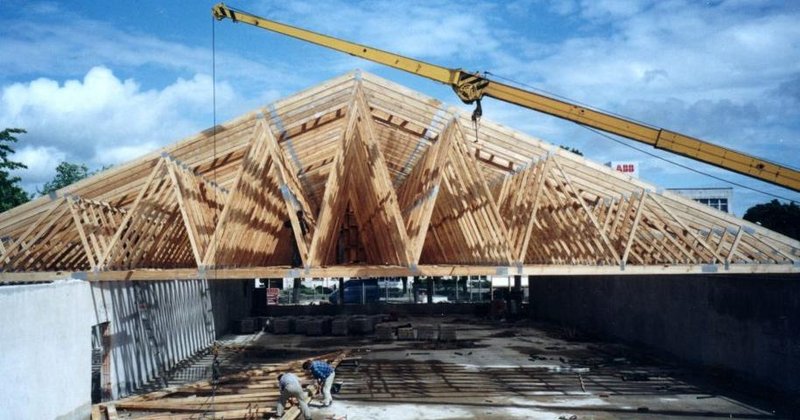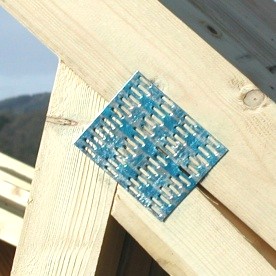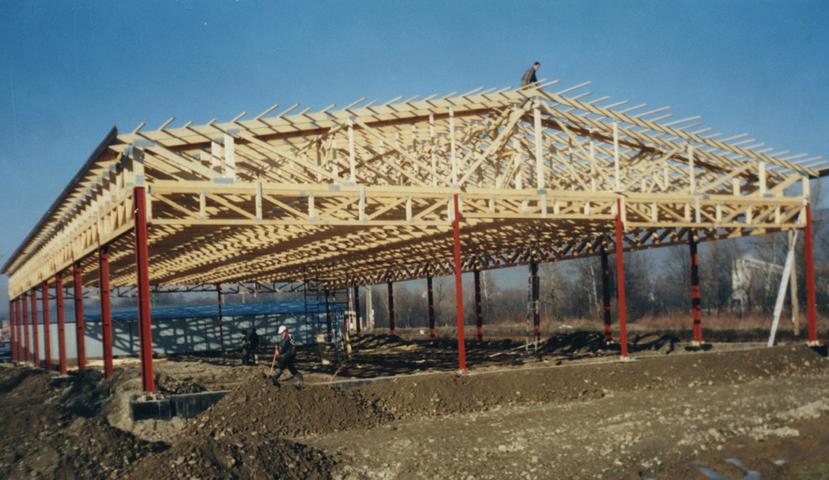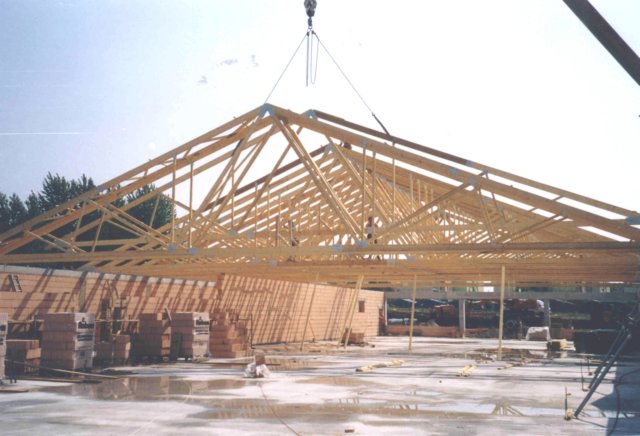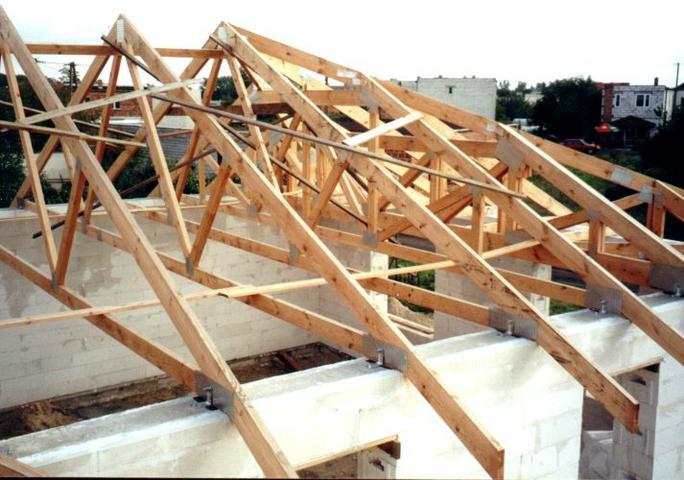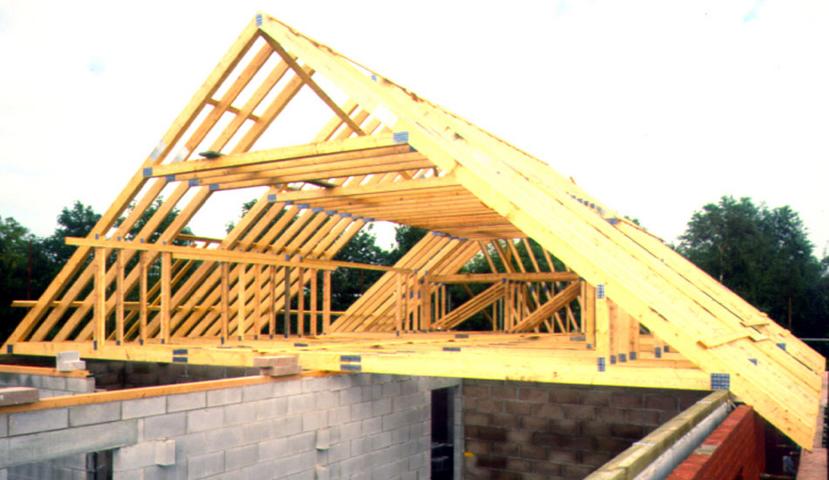Wooden roof truss production is based on the latest modern technology, developed in North America. Specialists use state-of-the-art equipment for timber processing and up-to-date computer technologies, facilitating the process of design and calculations.
The key to truss production is metal connector plates, which have been in use around the world since the 1950s. Connector plates are made of finest structural quality steel with pressed out nails in order to brace separate timber parts.
In constructing trusses AS Vesmont uses only those types of connector plates, which have undergone strict quality control and meet or exceed all European construction codes. The special connector plates are produced from rolled steel 1 or 1.5 mm thick. Connector plates are made of finest structural quality steel with pressed out nails in order to brace separate timber parts. All types of connector plates are produced on the equipment and by the license of MiTek and are certified in accordance with the European construction standards.
New technology and engineering methods changed a thousand-year-old process of timber usage, having made it maximally practical, eliminating the eternal problem of timber waste and minimizing labor costs. An average timber usage for walls, floor and ceiling beams mainly depends on the house design, its size and is approximately at the level of 0.1 m3 per 1 sq.m. of the total square of the house.
Among the special characteristics of the floor and ceiling beams, produced with the metal connector plates, are:
· The ceiling is designed as the unified bearing system, which eliminates squeaking and deformation, making the structure more sound-proof.
· Ceiling beams' height depends of the load and location of bearings.
Advantages of wooden beams with metal connector plates:
1. Easy and fast assembly;
2. Minimum requirements for professional qualifications at the construction site;
3. Forklift is not necessary;
4. Dry construction and assembly;
5. Allow easy electric wiring, central heating and ventilation infrastructure;
6. Easy works in case of reconstruction and renovation;
7. Significant decrease in price and construction times.
Vesmont performs design and calculations in full accordance with all the Estonian and common European construction standards, which in addition to the specialists' professional experience is a guarantee of reliability and good quality. At the same time fire safety of wooden and metal trusses is practically the same, because both materials need equal fire protection.
A 4-worker team can install trusses in the amount of up to 30 sq.m. of the horizontal roof projection per day. This type of construction is very dynamic, it doesn't need hoister equipment as everything can be installed manually.
Today connector plate technology is applied far beyond its native land - North America, but all around the world as well: Sweden, Norway, Finland, France, Netherlands, Denmark, Great Britain, Germany, Austria, Switzerland, Ireland, Russia, China, Turkey, Algeria, USA, Canada, Japan, Australia, and now - thanks to AS Vesmont - the Baltics.

France Sweden Czeck Rep. Estonia
In its truss construction AS Vesmont uses state-of-the-art machinery and currently updated software for engineering and design.
Revolving and inclination saws have been developed in closed cooperation with the leading manufacturers of wooden houses and roof trusses in Scandinavia. Computer steering in combination with a HMI (Human Machine Interface) based touch screen display gives fast and simple setting of angles and lengths.
Special press was specially developed for roof truss production.
The Advantages of Trussed Rafters
1. A fully engineered, practical, flexible solution for a wide range of roof structures.
2. Material savings: trusses can use up to 40% less timber than a traditionally built roof.
3. A method of roof construction which utilises established industry skills and equipment.
4. Because roof trusses are pre-fabricated components you save time and cost on site.
5. Reduced site waste, loss and pilferage of materials.
6. Space saving on site, with no need for timber storage or carpentry areas.
7. The ability to accept a wide range of roof and ceiling coverings.
8. The design flexibility to accommodate the wide range of services required in modern buildings.
AS Vesmont performs works at all stages - from designing separate trusses using specifically developed software in accordance with concrete customer needs to producing full trussed roofs based on client's designs, using for production its technological equipment.

















